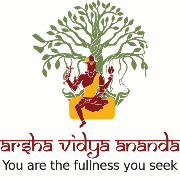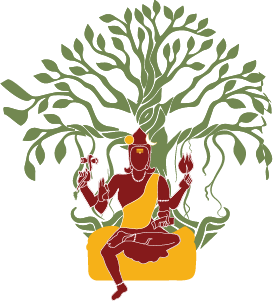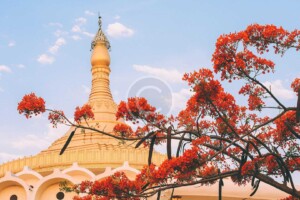Holi and the commitment to Dharma
Holi is a celebration of good over evil, It is a celebration of love over hatred. It is a celebration of clear thinking over confusion. The celebration of good over evil is based on the incident found in Bhagavatam Purana,
King Hiranyakashipu was the king of Asura-s, who were given to adharma. Through his tapasya, he had earned a boon that gave him five special powers: he could be killed by neither a human being nor an animal, neither indoors nor outdoors, neither at day nor at night, neither by astra nor by any shastra, and neither on land nor in water or air. Hiranyakashipu grew arrogant, thought he was God, and demanded that everyone should worship only him.
Hiranyakashipu’s own son, Prahlada, however, disagreed. He was and remained devoted to Vishnu. This made Hiranyakashipu angry to no end. He subjected Prahlada to cruel punishments, none of which affected the boy or his resolve to do what he thought was right.
Finally, Holika, Prahlada’s aunt, tricked him into sitting on a pyre with her. Holika was wearing a dress that made her immune to injury from fire, while Prahlada was not. As the fire roared, the dress flew from Holika and encased Prahlada. Prahlad survived while Holika burned to death.
Lord Vishnu, appears as Narasimha avatar to destroy Hiranyakashipu.
The Holika bonfire and Holi signifies the celebration of the symbolic victory of good over evil, of Prahlada over Hiranyakashipu, and of the fire that burned Holika.
Reflecting the ever present conflict between good and bad, Arjuna asks a very pertinent question in the Bhagavad Gita –
Atha kena prayukto yam paapam charati purushah
Anicchanapi vaarshNeya balaadiva niyojitah.
Impelled by what does a person commit papa, a wrong action, as though pushed by some force, even though he does not desire to do so?
And Bhagavan Krishna replies –
Kaama esha krodha esha rajo guna samudbhava
Mahaashano mahaapaapma vidhyenam iha vaairinam
This desire, this anger born of rajo guna – It is a glutton and a great sinner. May you know that to be the vaairi, enemy in this world.
Just in case you think you can blame your wrong actions, Bhagavan Krishna’s words clearly imply that, when somebody performs a wrong action, don’t think that there is a devil or force sitting there who has a remote control.
We have to understand how Kaama and Krodha operate. Kaama means a binding desire which is not in line with dharma and Krodha is the resulting anger that comes from not having your desires fulfilled.
Generally Kaama and Krodha go hand in hand and have a tremendous force as they are born from rajas. On the other hand wisdom and clarity is born from sattva. Both Kaama and Krodha are referred to as great sinners because they contribute to those actions that a person regrets for his or her entire lifetime. Like thieves, Kaama and Krodha (as though) rob away your greatest treasure which is knowledge. Many relationships have been broken because of the words spoken out of anger. Most acts of crime or adharma in the history of mankind come from a binding desire and the resulting anger. Hiranyakashipu had a binding desire that everyone should worship him and he was so blinded by rage that he was killing to kill his own son.
Such is the power of kaama! Such is the power of krodha!
The binding desire could be for someone else’s partner and hence you cannot resist an extra marital affair. The binding desire could be for lots of food with no care for the resulting lifestyle diseases that come from over eating. Kaama could be for more money and hence not paying one’s taxes or taking shortcuts in product development risking the life of people who use the product. Kaama could be for your son or daughter only getting into the profession of your choice with no care for how you hurt your children. Kaama could be for the many items that you see online on Amazon and hence a total disregard for the mounting credit card bills. Kaama could be for perfecting an asana and hence a disregard for the possible injury that can result.
The desires are so powerful that you are willing to compromise on the means.
If indeed kaama and krodha are enemies then how do we deal with them?
Bhagavan Krishna does not say – You should not get angry. You should not have desire.
It is the worst advice that anyone can give you.
He says that your desire seems to cover something and that something is knowledge – dharma-adharma-viveka and Atma-anatma-viveka.
Dharma-adharma-viveka meaning what is to be done and what is not to be done and
Atma-anatma-viveka – the knowledge of what is permanent and what is impermanent. This two fold Viveka is required to conduct one’s life.
The mind that has this knowledge of what is to be done and what is not to be done is covered just as blazing fire can be covered by smoke, just as a mirror can covered by dust.
What is the way out? There is a permanent and a temporary solution
- See that a binding desire, kaama comes from a sense of inadequacy, apurnatvam, a sense of being limited. This sense is like a perpetual spring from which desires keep flowing out. The sense of inadequacy is based on the conclusion of taking yourself to be just a human being. This ignorance will only go in the wake of knowledge. This is a permanent solution.
- Temporary solution is to use the discipline of shama and dama to manage our binding desires. Shama is a psychological resolution of the mind with vichara, enquiry. The kind of vichara we have when we go to the department store. We are able to dismiss many passing fancies by thinking of whether we really need it, and whether we have the space for it etc. Some desires are best fulfilled by fulfilling them and aligning them to dharma as much as possible and some desires are best resolved through vichara, enquiry. Pause to think – Is it feasible, necessary and legitimate to fulfill the desire? What are the consequences of fulfilling the desire? Maybe temporary satisfaction but the hurt, guilt and irritation that I have to live with, is not worth it.
You can say no to smoking only when you say yes to health.
You can say no to the extra marital affair only when you say yes to loyalty and exclusive commitment.
You can say No to something only when you say Yes to something higher and that
higher for all civilizations has been dharma.
Dama is restraint of the senses at the physical level. Telling yourself – This is enough. Thus far and no further is the practice of dama. If you don’t have restraint with your tongue when you get angry practice dama, that you will not speak when you are angry.
Learn to tell the person – I will speak to you later rather than pounce on the person with insults and humiliation.
When do you start practising shama and dama born of your knowledge? Mind mastery and physical restraint of the senses. ? Definitely not when you are experiencing the intense binding desire.
The army does not start practising war strategies on the eve of the war. The army practices all year around so that it can be battle ready.
Likewise you start practising shama and dama with small binding desires. Like learning to say No to that extra plate of pastry or learning to say No to buying yet another piece of clothing to your overflowing wardrobe. You can resolve that – I will not make anyone a victim of my anger. I will learn to tell people what I want and explore if getting it is possible,
As much as they can be harmful, learn to see that Kaama and Krodha are a part of the emotional landscape, the emotional order of Bhagavan.
They are to be mastered as they exist and not rejected as they are a part of Bhagavan’s very creation. We can take the help of Bhagavan, the help of satsanga with like minded people, the association of a guru, the discipline of yoga.
Even Prahlada, the little devotee of sought the help of Vishnu who came to his rescue in such a beautiful way.
We too can seek refuge in Bhagavan Vishnu to bless us with grace so that our knowledge of dharma guides our actions.
We too can seek guidance from Bhagavan Vishnu by making a commitment to our self growth and emotional mastery and not let kaama and krodha run our lives.
We too can seek the blessings of Lord Vishnu for burning away confusion and all anartha in our lives.
By seeing the meaning, we add meaning to this Holi celebration. Happy Holi!
(Transcript of video – Teachings for Holi – https://www.youtube.com/watch?v=M3O2rBYfUGA)
Tag:Blog, Dharma, Indian Festivals, Vedanta




1 Comment
HarihOm